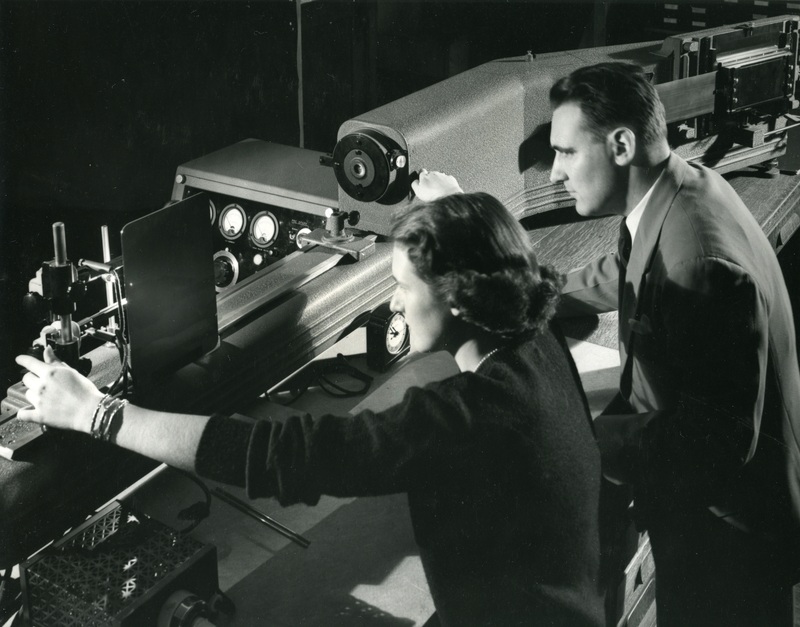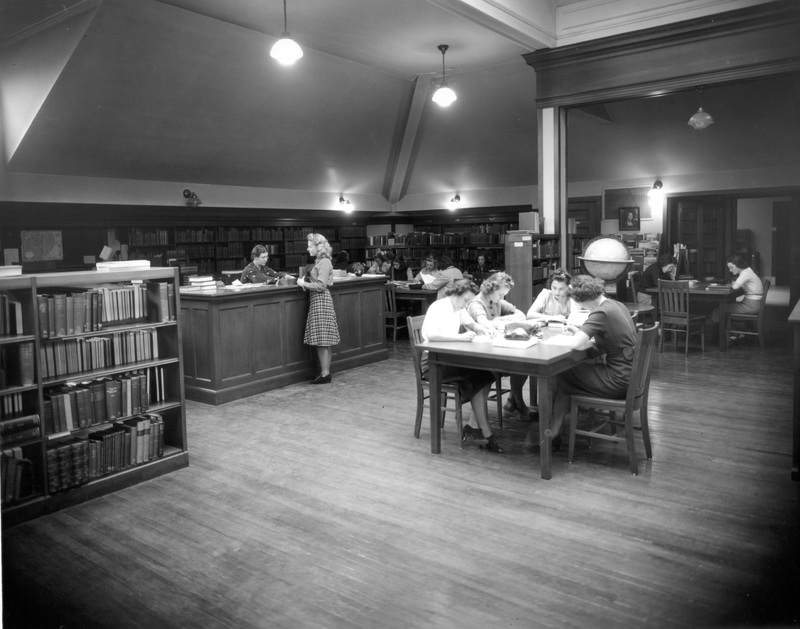The Middle Years, 1940-1959
The 1940s and 1950s witnessed a deepended commitment to the College’s original mission alongside considerable challenges beyond the institution’s control. Just as Simmons later weathered the 2008 financial crisis and the COVID-19 pandemic, the College faced considerable financial and professional challenges wrought by World War II.
However, because of the practical and professional orientation of its curriculum, the Simmons community not only confronted but prospered under the wartime demands. Graduates were already prepared to enter war service through their professional education. Indeed, Simmons students served in a wide variety of roles from machinists to nurses.
After World War II, the G.I. Bill made higher education possible for many veterans. As President Bancroft Beatley, Simmons’s second president, stated:
“My faith in the validity of the Simmons programs of general and professional education has been strengthened… More G.I. women have elected [Simmons] as the place in which to complete their education than have sought any other independent women’s college.”

Unidentified student and perhaps a professor operate the spectrograph in the Physics laboratory, ca. 1950.
In addition, an amendment to Simmons's Charter in spring 1945 allowed men to enroll in technical courses, but not as incoming freshmen.
As the U.S. witnessed a post-war boom from the late 1940s and throughout the 1950s, new programs were added to the curriculum to provide further routes for women (and a few men) to earn an independent livelihood. Four male veterans enrolled in Simmons College–two men in the School of Library Science and two men in the School of Social Work.
The School of Publication (first mentioned in 1951-1952 course catalog), the School of Social Science (first mentioned in 1952-1953 course catalog), and the School of Education (first mentioned in 1957-1958 course catalog) were also established. In 1949, the School of Library Science began offering a Master of Science degree in addition to a Bachelor of Science, further contributing to the movement of women into the professional sphere.
As demand for admission increased in the post-war years, so did the need for student housing. In response, four new dormitories and Bartol Dining Hall were constructed. Arnold Hall opened in 1951 and Dix and Morse dormitories in 1953. Simmons Hall opened in 1956, anchoring the Residence Campus triangle.
